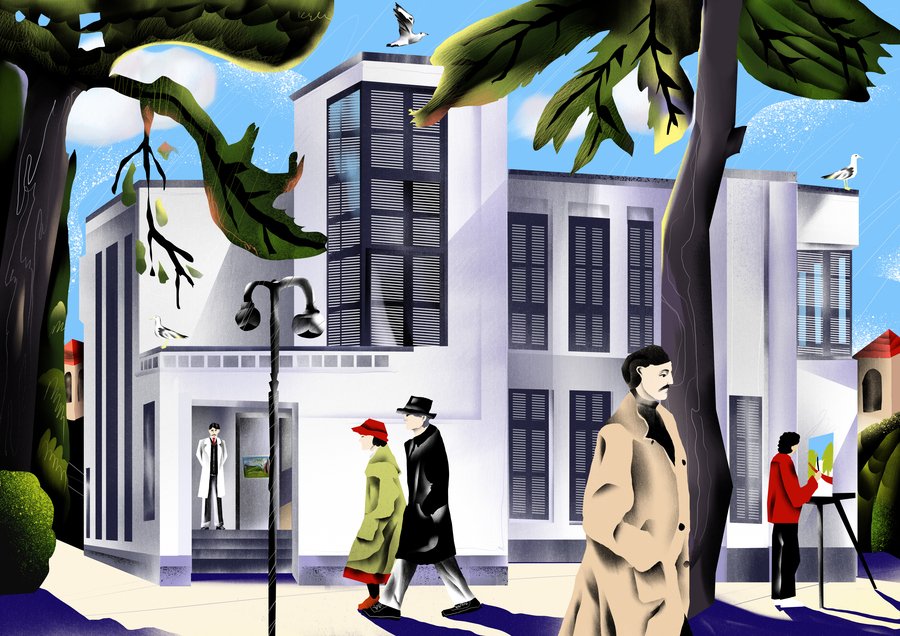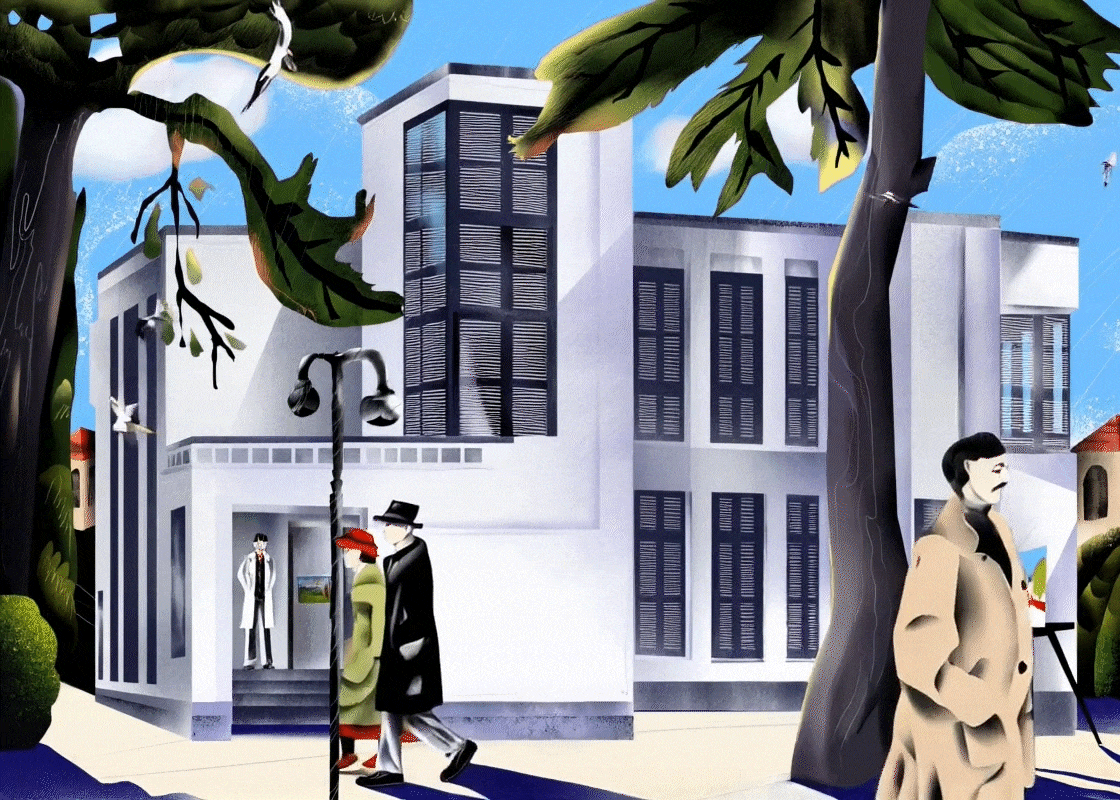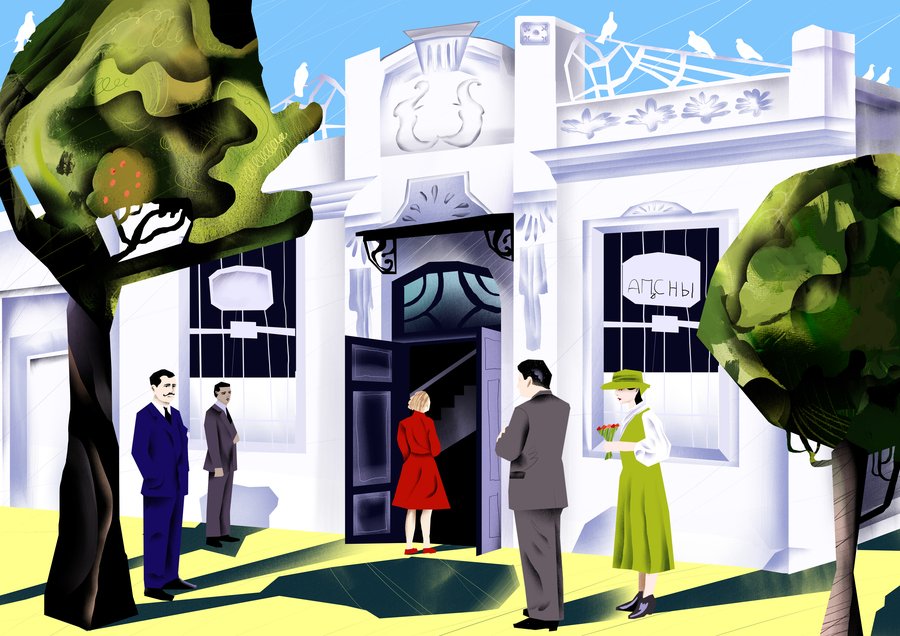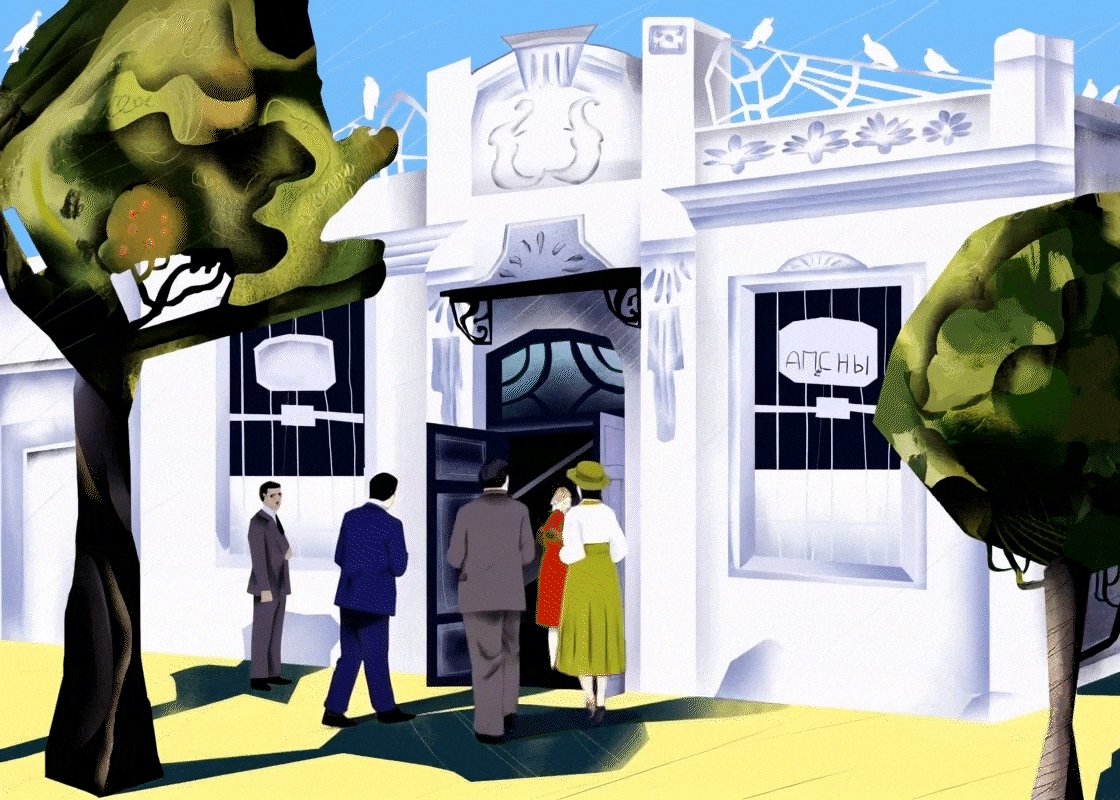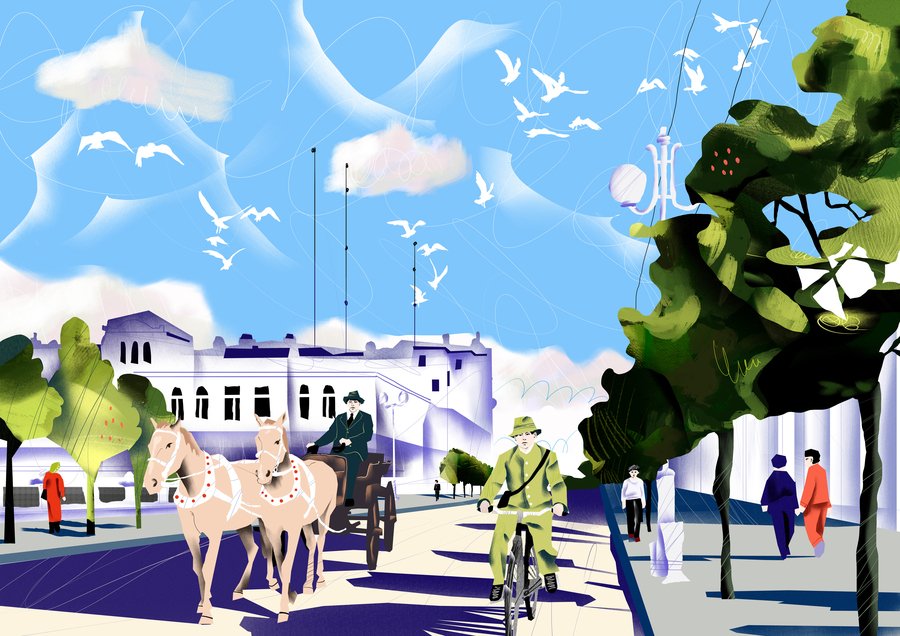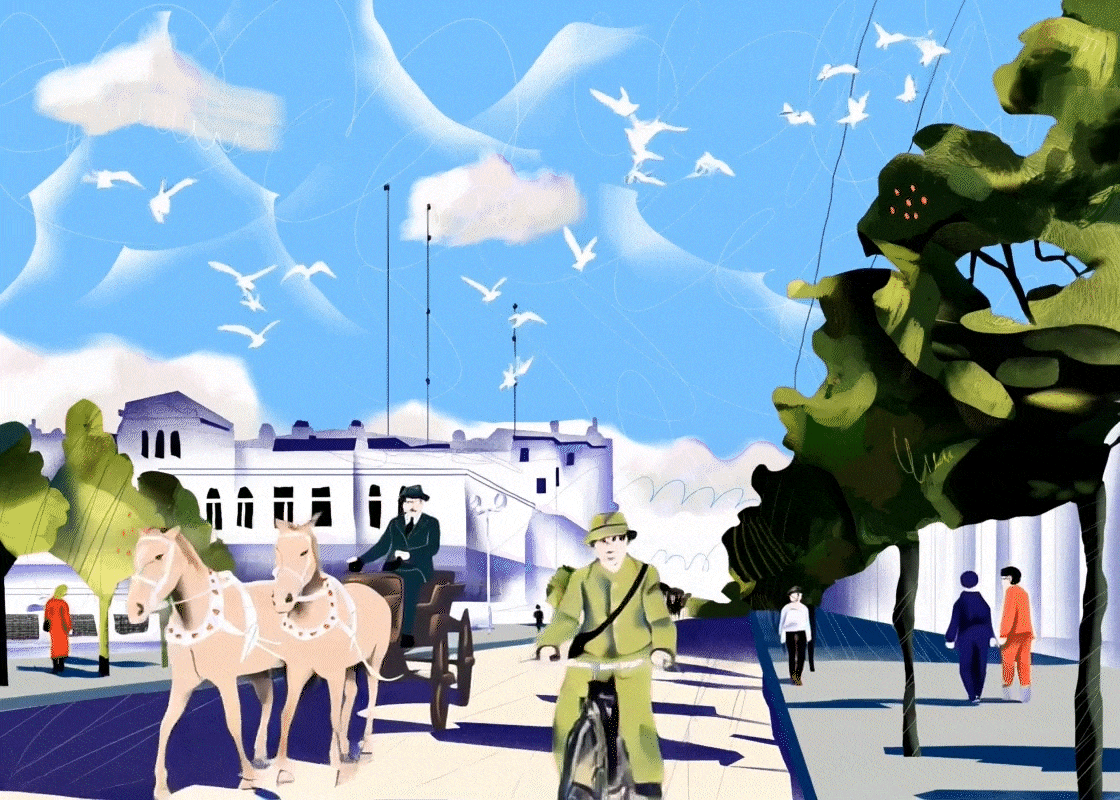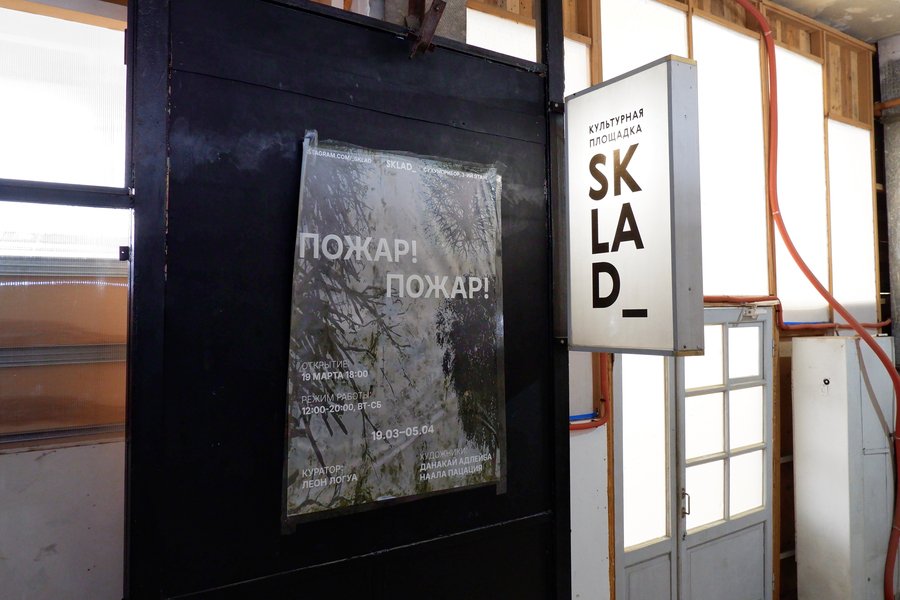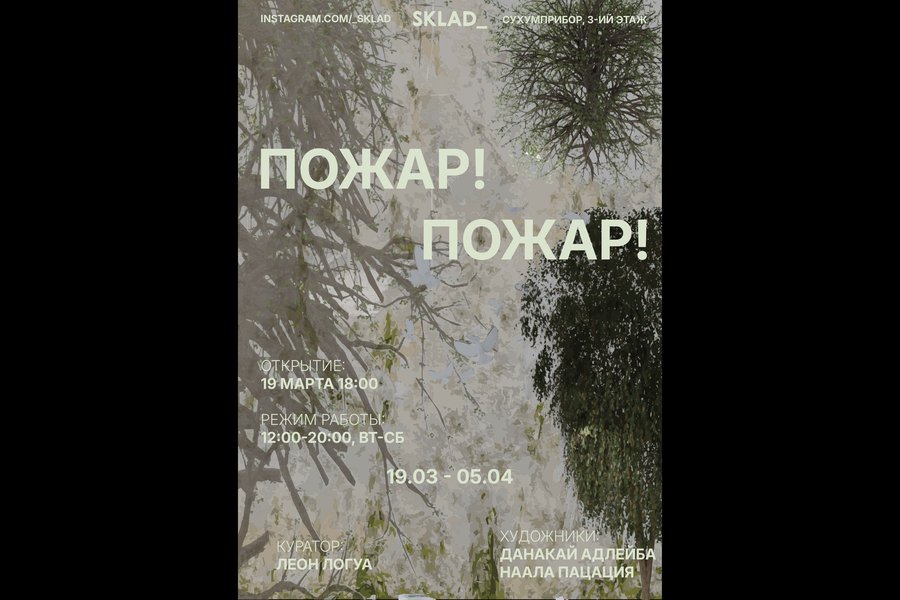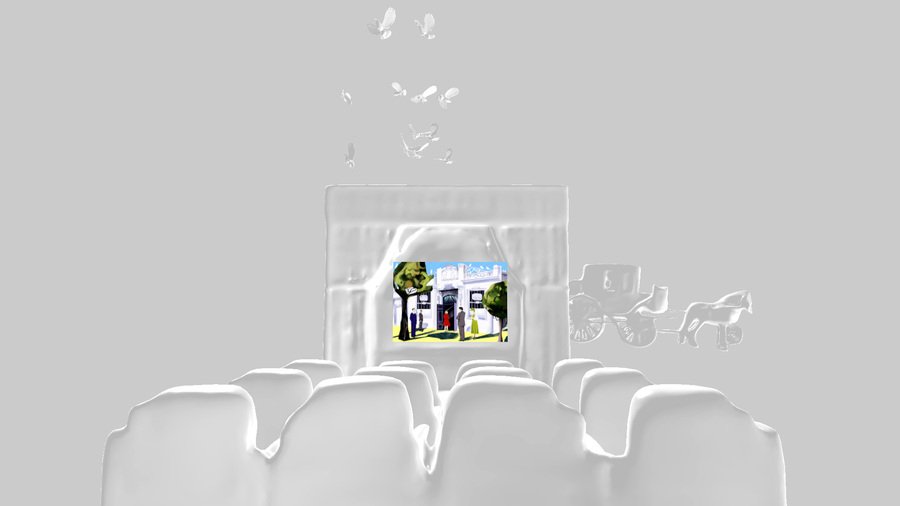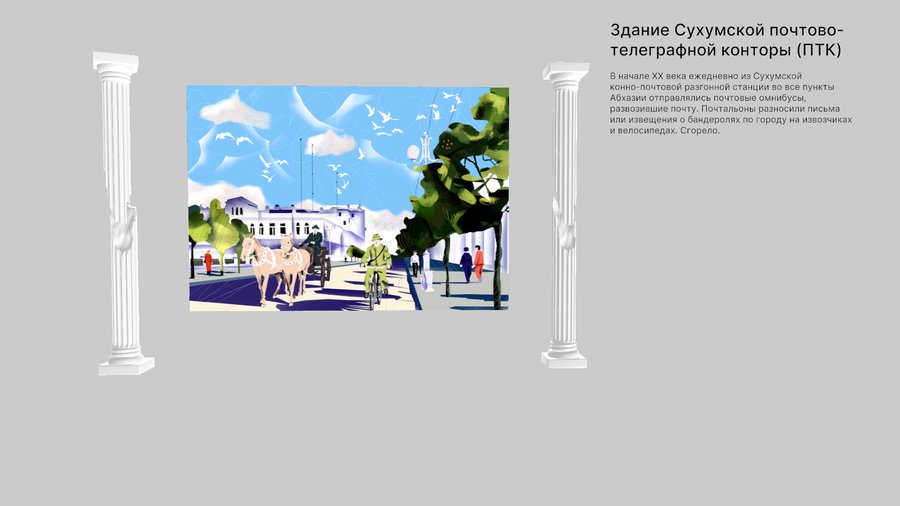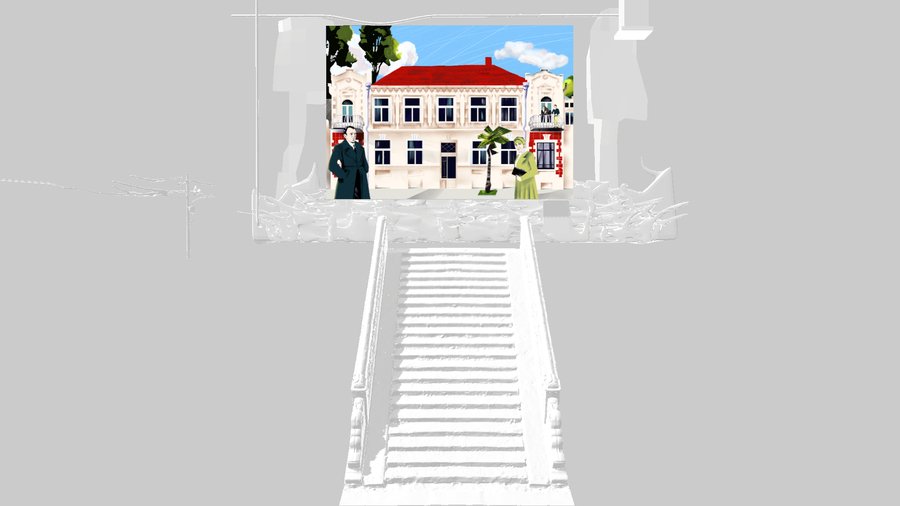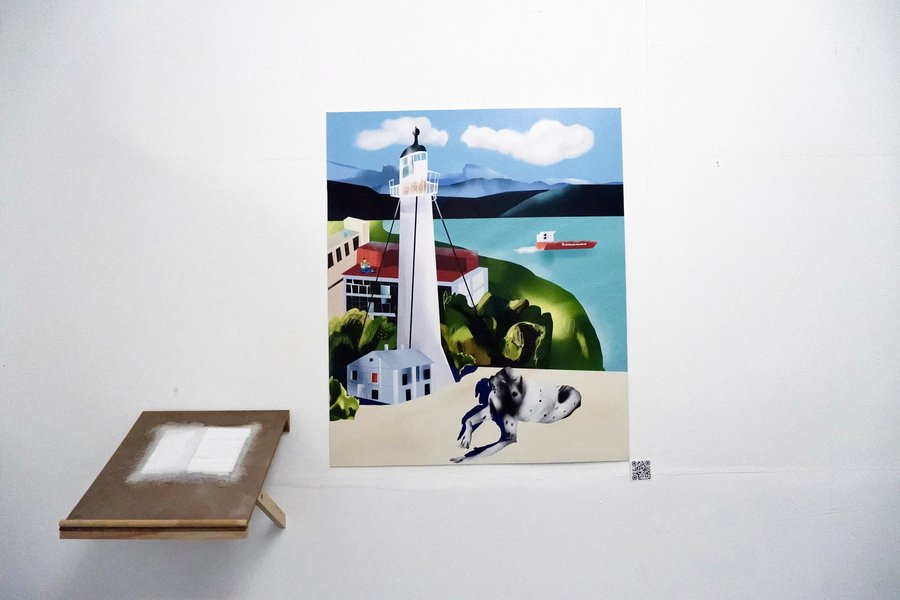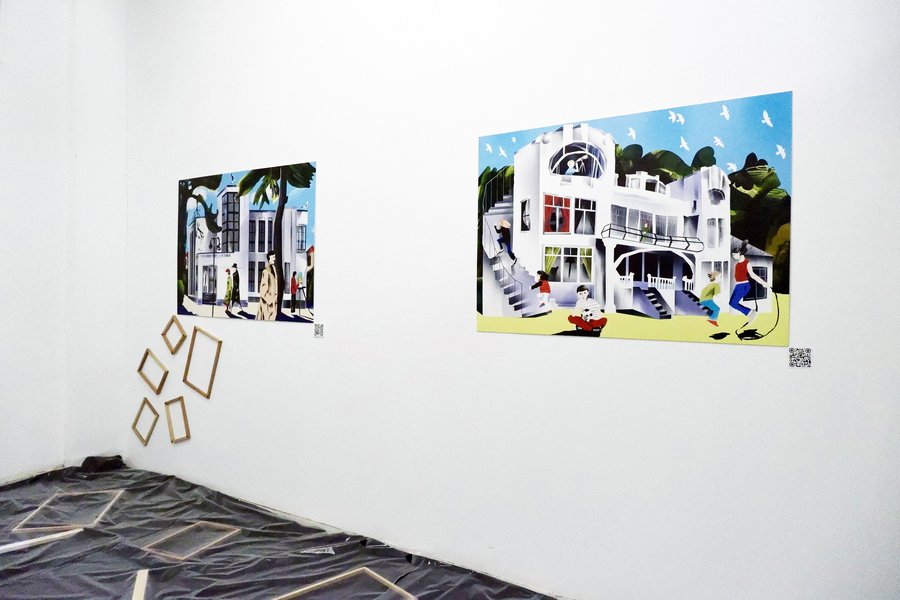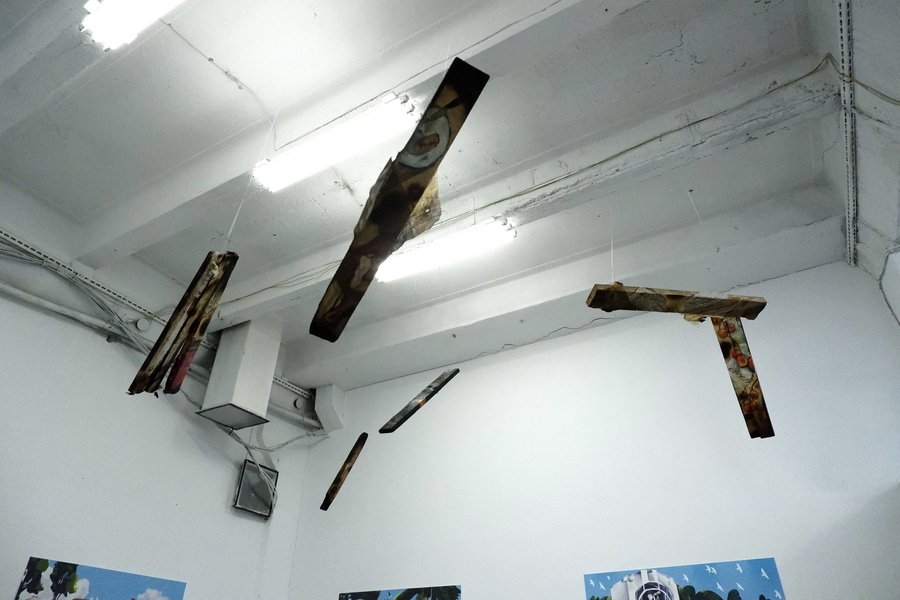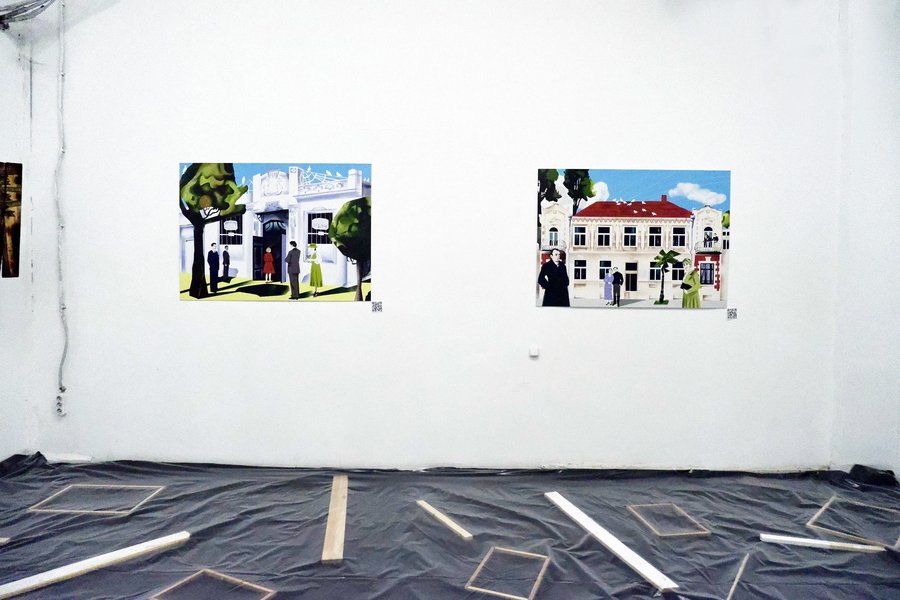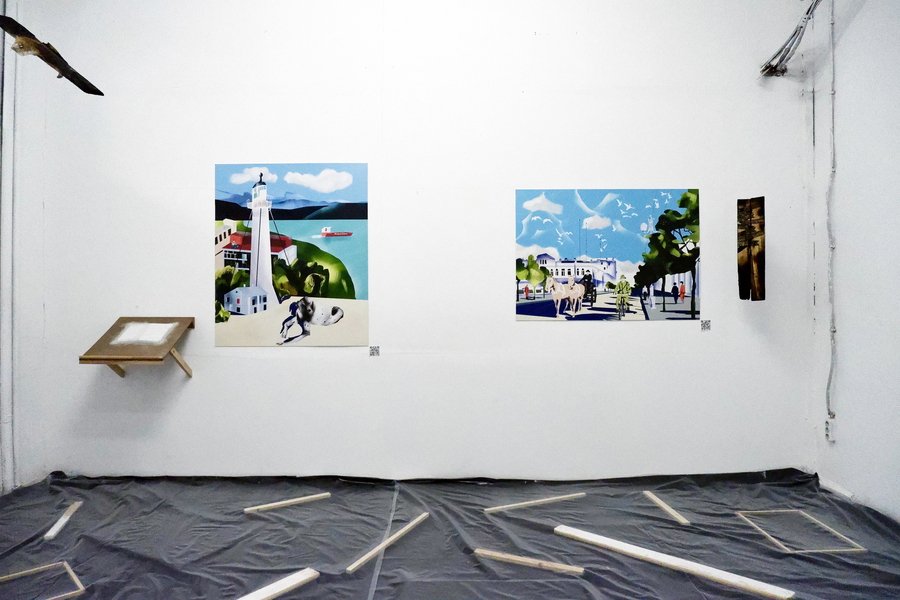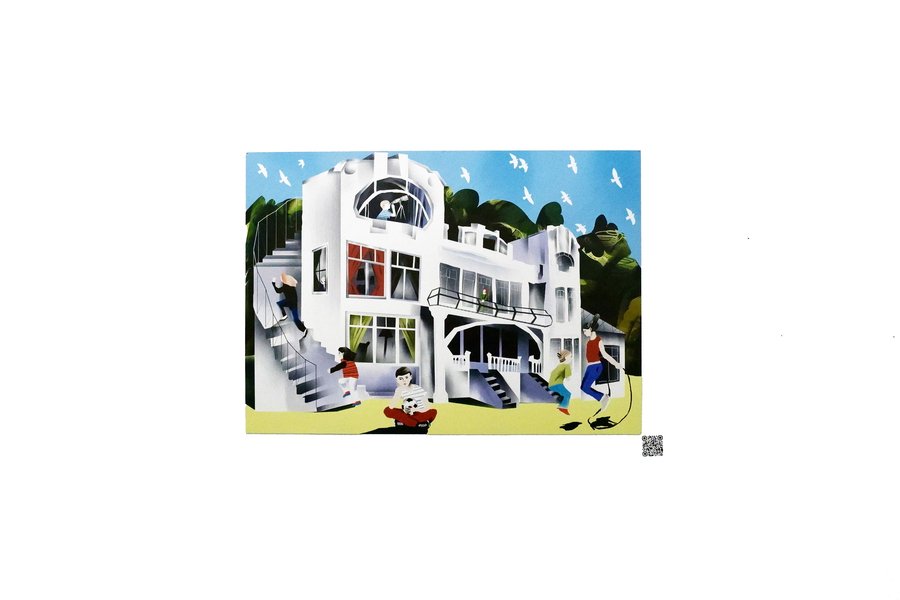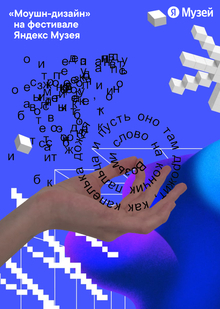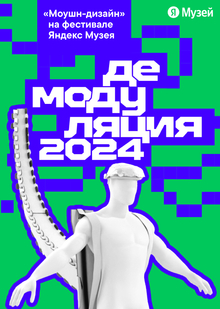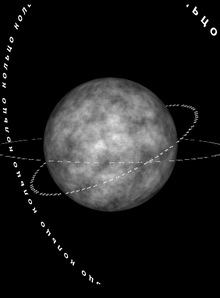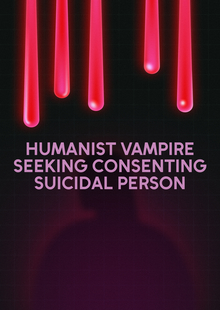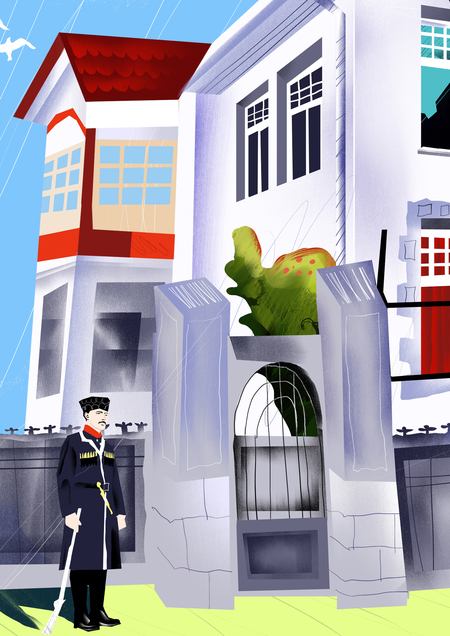
It’s an exhibition called «SHORT! HAPPY!»
My project explores the lost Sukhumi architecture: buildings, people, objects and stories linking them — a memory that is not available today. The aim of the project is to create a series of works for an exhibition at the SCALAD cultural site and to create a virtual space to demonstrate these works. The whole project is not an attempt to familiarize the audience with Sukhumi’s archive, but a small opportunity to get away from the unheeded voids on the city’s body for a little while, to face the «ghost» of a lost reality. Each work is accompanied by an animation filled with fragmented and unstable forms, similar to a lubricated memory. Exhibition curator: Leon Logua Artists: Adlayba Danakai, Naala Pazzia
Dr. Fishov’s house.
Dr. Fishov’s house.
The building was built in the design style of the late 1920s, with Dr. E. L. Fischkov working as a doctor at the Suhum «communicable» hospital (infection hospital) at the beginning of the 1930s. He was a passionate art collector. His home and collection of paintings by the artists of Abkhazia he bequeathed to the future art gallery. The current collection of Abhaz State Art Gallery paintings began with the meeting of Dr. Fischov.
Dance of Lieutenant Colonel A. S. Averkiev
Dance of Lieutenant Colonel A. S. Averkiev
At the beginning of the twentieth century, a retired lieutenant colonel, A. S. Averkiev, purchased a sanitation site and built a two-story driveway on it in 1905. In 1912 there was a sanatorium run by Dr. Gambashidze. In 1921, the building was municipalized and housed the Sukhumi Children ' s Home for Street Children. Later, the children’s home closed and the building became a multi-family house. It’s gone.
Samuridi Theatre, synematograph ♪ Science and life ♪
Samuridi Theatre, synematograph ♪ Science and life ♪
==History==The Samuridi theatre was opened in 1912 in Sukhumi as the first building specially designed for a dramatic theater, and was created by architect Alfred Bamme in a modern style for merchant H. K. Samuridi, who also owned the Science and Life cinema and the restaurant in the same building. In 1915, the theatre was sold and, since 1921, became a municipality and was renamed the 2nd Gosteatre of the SSR of Abkhazia. In the late 1930s, he was renamed the Apsna Cinema. The restaurant Science and Life was demolished in 1949 and the cinema was demolished in the 1980s.
O. I. Bostanjoglo House (N. Lakoba Home Museum)
O. I. Bostanjoglo House (N. Lakoba Home Museum)
O.I. Bostanjoglo built a two-story home for his family. In 1917, the house was sold to a merchant, A. A. Guliantsu, and in 1923 it was municipalized. Nestor Lakob’s family has been living here ever since. In 1936, Lakoba was killed and in 1937 his wife and son were arrested and later killed. In 1982, the house was opened by the N. A. Lakoba Museum, but during the 1992-1993 war, the building was destroyed and all the pieces burned down.
The Lacob family did not have many rooms: the living room, the dining room, Nestor’s office, his bedroom, and Sarah, and Rauf’s separate torch. Every bedroom had its own balcony. And on what was Rauf’s, there was a monkey sitting on it, and someone gave it to the boy. Many people in the old generation remembered this monkey, and she was very prickly, and she jumped all the time. There have always been great visitors to Lakob’s house: marshal Michael Tuhachevsky, party activist Vasily Blucher, revolutionary Gregory Ordzhonikidze, and many others. In the living room on the second floor, there were famous writers and poets, including Osip Mandelstam, Zinaida Richter and writer Peter Pavlenko.
In the early part of the twentieth century, post offices were sent daily to all points in Abkhazia from Sukhumi to deliver mail. The mailmen delivered letters or notices of banderoles to the city by means of drivers and bicycles. It’s burned.
In 1867, the Russian government granted the shareholders Brothers Siemens and Siemens and Gaalsk a concession to establish a wire link between Europe and India. The route was from London through Emden, Berlin, Warsaw, Gitomir, Odessa, Kerch to the Black Sea, and then on the sea floor to Sukhumi and further to Tiflis, Erevan, Tehran, Karachi and Bombay. The total length of the line was 10,000 kilometres, a significant technical achievement.
On May 1, 1870, in Sukhumi, telegrams were opened, making it possible to send messages not only to Russia but also to Europe and Asia. The Morse machine was installed at the Indo-European telegraph station. The Russian-Turkey war of 1877-1878 seriously damaged the telegraph line, destroying the Suhum station. After the war, they built a new building and replaced Morse’s machines with Yuza’s typewriters.
After the launch of the Indo-European telegraph in the Caucasus, the Symens brothers had problems. The locals had fun shooting at the cell blocks on the poles and permanently disabled the telegraph. The English had to hire cossacks to guard the line. The alarm bell rang when the line was broken on the tower, and the guard reported an accident. Under a contract with Russia, repairers were required to give horses at postal stations on short notice.
Aphic
The poster was created in cooperation with Leon Logois, the curator of the exhibition. During the virtual space development phase, I prepared the rendezvous, and Leon added printing on top of it.
The exhibition continues with 3D space, a kind of abstract tour of the city of Sukhumi, which consists only of archetypic outlines of familiar viewers of the forms of the city and of my works, supplemented by the archival descriptions of Anzor Aguma.
3D-space — Adlayba Danakai Zvuk — Adlayba Danakai, Logois Leon Work in Unity — Daria Kozyrev
Exhibition
Leon Logua was involved in the organization of space and the fun of my work, as well as the work of Naala’s artist. «Danakai Adlayba has created a series of graphics in which utopian fantasies about Sukhumi are intertwined with the reconstruction of several historic buildings. In these visualizations, the past is not simply being restored, but is re-enthroned in imagination. Naala Pazzia presented a series of paintings that are a key part of the physical exhibition. The installation consists of floating boards showing household items: fruit, wall watches, kitchen utensils. The bottom is the black floor and the scattered boards covered with a semi-translucent film. These items are fragments of day-to-day activity frozen at the time of disappearance.» Leon Logois, C.E.O., Fire! Fire!»
Photo author: Rafael Chazmava
«Suhum’s history has shaped our tradition of continuing dialogue with the past. But in many ways, the reason why we so often turn to architecture, when we talk about memory, is because houses are big. They’re significant, visible, their images easily pop up in the head. We need physical objects that can be tied to all of our unformed little stories, like hooks, maps. Through these images, we try to control the shape of the city, even when it changes or disappears. „Fire! It’s a fire! It’s a study of Sukhumi’s architecture, trying to move the remaining archive to the fabric of modern reality. Archiving itself becomes a painful process: the past that has been recorded does not restore what has been lost, but turns into its impersonal ghost. We record, preserve, document, but face only what has been ripped out of our environment.“ Leon Logois, exhibit sponsor „Fire! Fire!“
Photowriter: Rafael Chazmava
